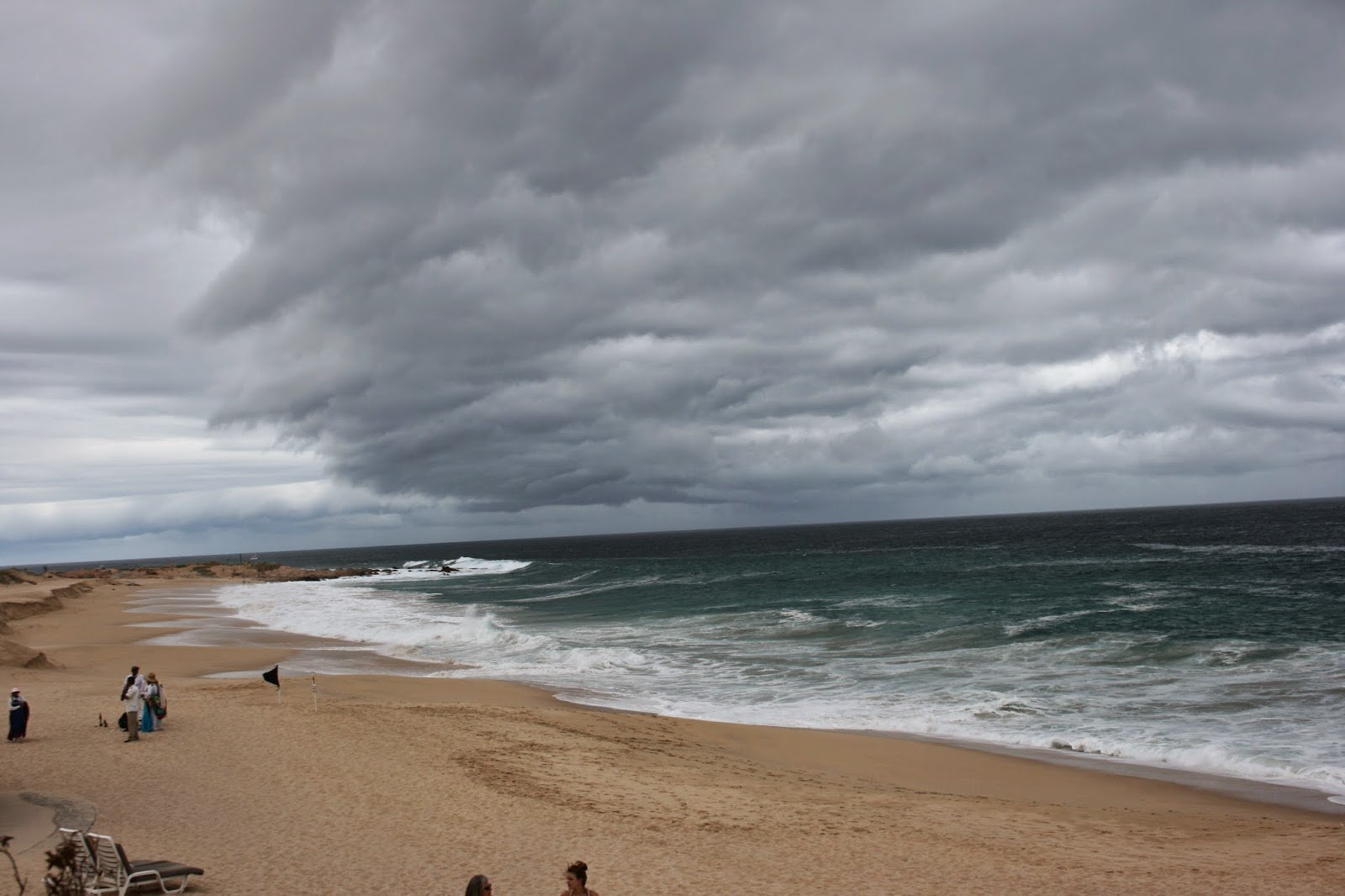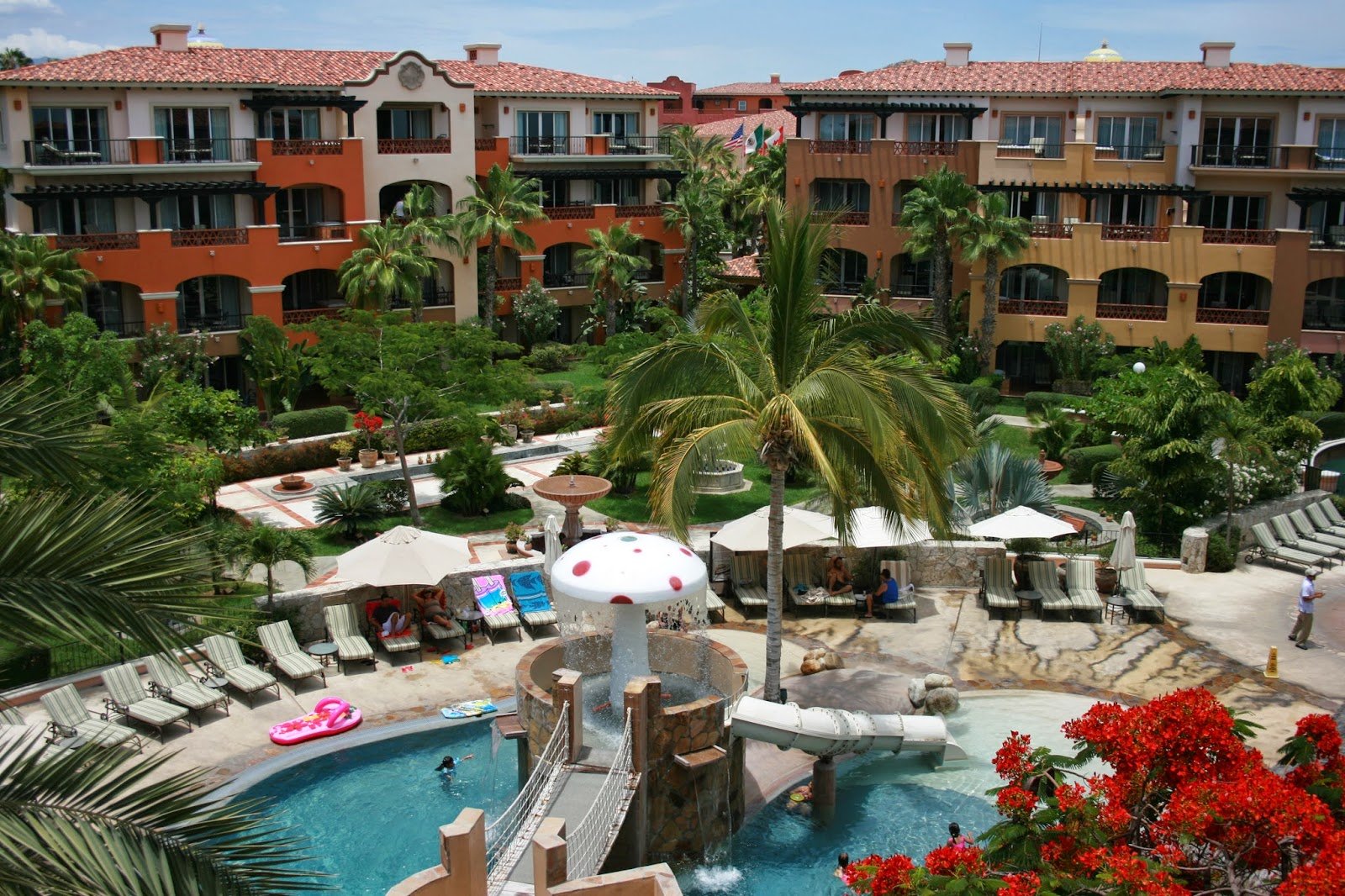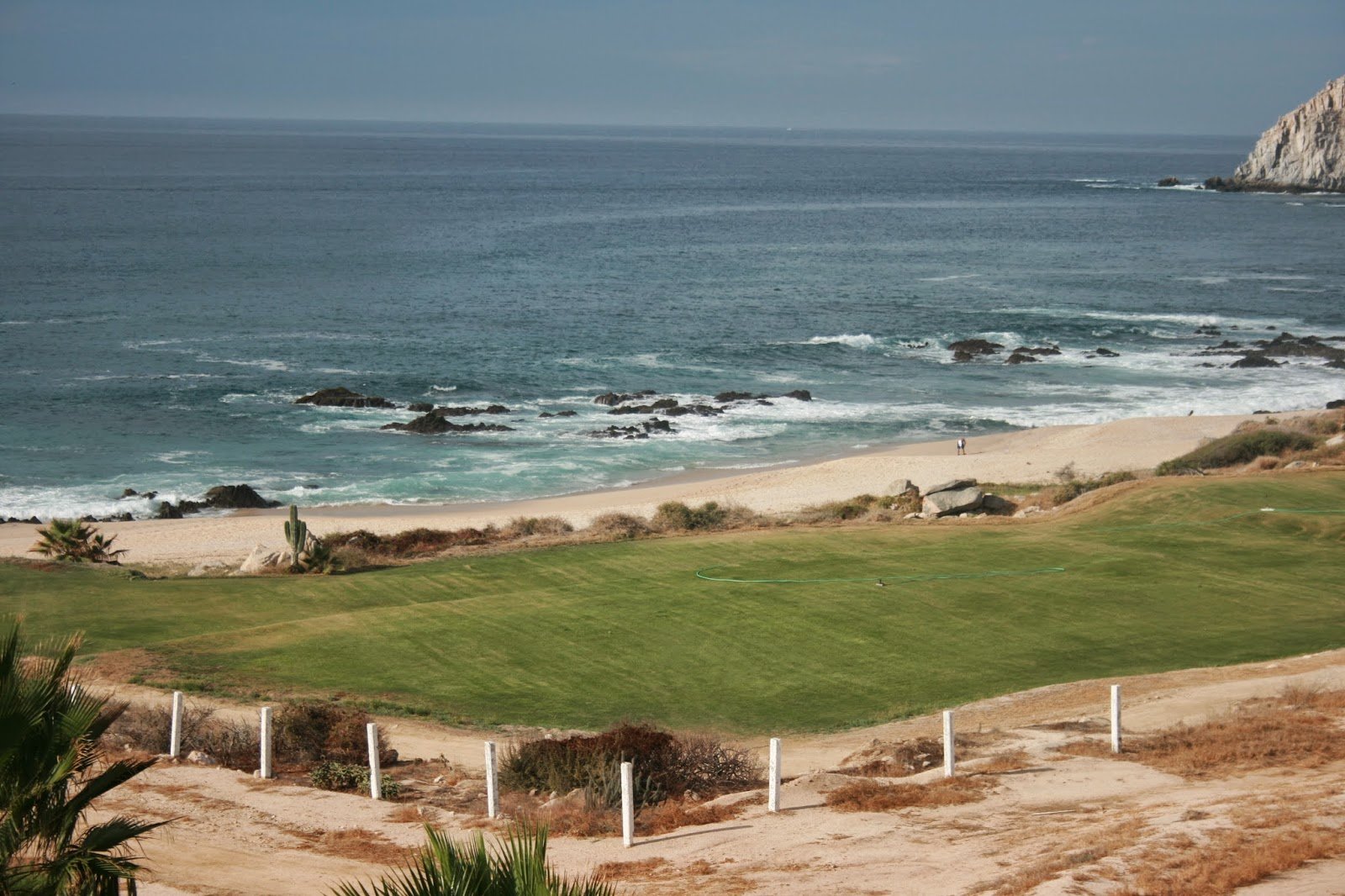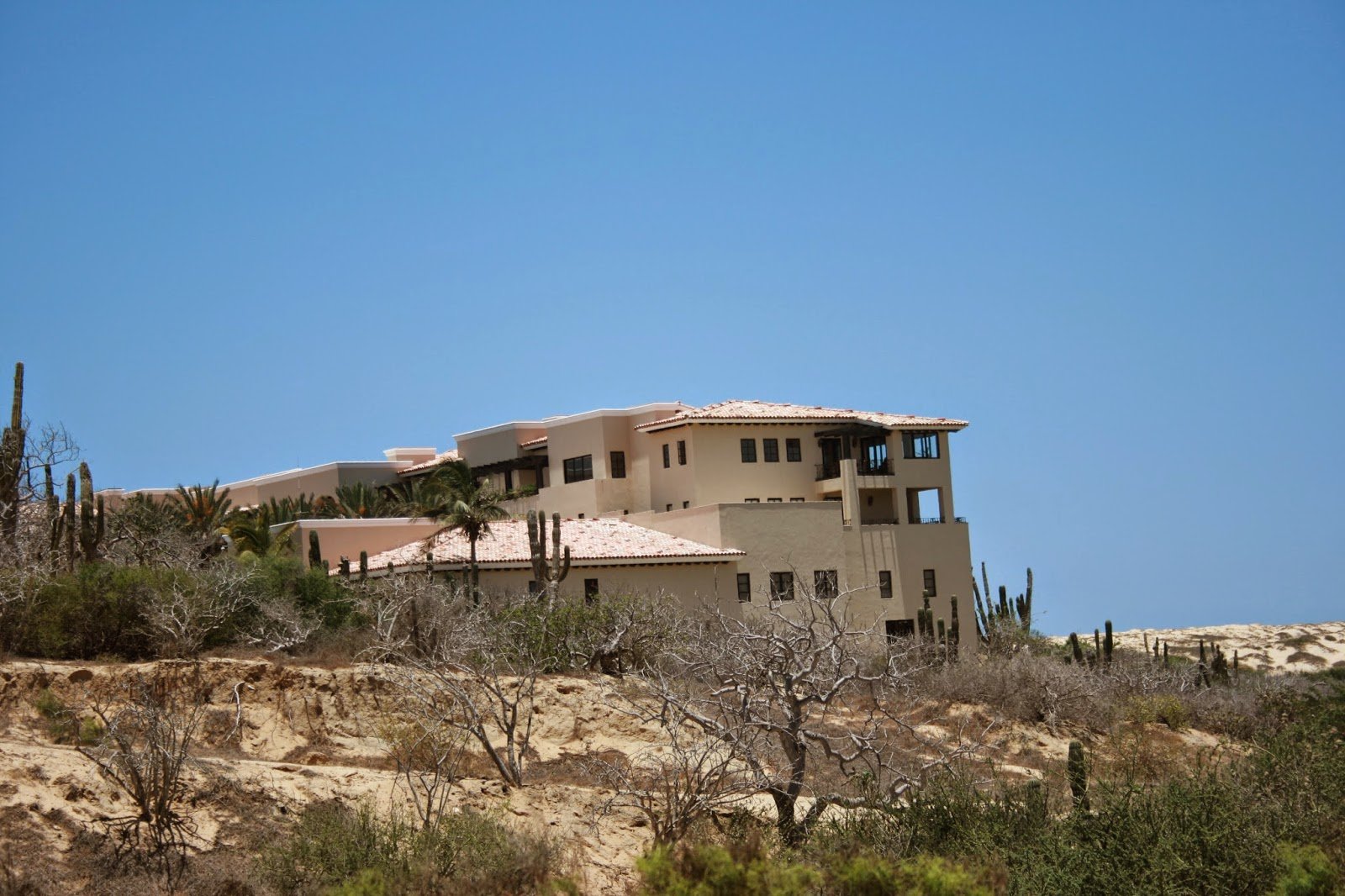Mexico has always been a land of contrasts, and remains so today. Flowers burst with color in landscaped lawns. Nearby, wind-blown El Cardonal cactus bristle to survive in the brown desert sage brush.
 |
| The Sea of Cortez is beautiful – but deadly. |
Rich and poor, side by side – new highways and toll roads rambling by abandoned buildings and trash strewn alongside the road. Spectacular oceanfront resorts adjacent to vacant lots that cannot be developed because of the lack of infrastructure and, most importantly, water. Lush green golf courses surrounded by arid rolling sand dunes.
The brilliant blue waters of the Pacific Ocean and Sea of Cortez beckon swimmers to the beaches, where huge posted warning signs order them not to go in the surf. There are some wonderful safe beaches here, but many are too deadly for swimmers, due to unpredictable currents and rip tides – too dangerous even for lifeguards.
The push and pull of the Pacific reflects the area’s split personality toward tourism: as the overall economy shows signs of recovery, new resorts are emerging from the desert floor. Cabo’s civic fathers, meanwhile, hang on fiercely to the lifestyle, traditions and simplicity of the onetime sleepy fishing village. Contrasts aplenty.
Cabo Resorts Offer Picturesque Playground for Adults and Families
The Highway 1 corridor between San Jose del Cabo and Cabo San Lucas packs dozens of resorts and vacation rentals along a sprawling coastline overlooking the Gulf of California and the Pacific Ocean. If you’re not staying in one of the party-all-night, hot-tub-on-the-roof resort hotels in downtown Cabo San Lucas, you’re likely to spend a Cabo vacation in one of the luxury resorts in the Corredor Turistico. The Sheraton Resort and adjacent Hacienda Del Mar Vacation Club sit smack in the middle of the corridor in an 1,800-acre complex called Cabo del Sol.  |
| Hacienda Del Mar Vacation Club’s villas and pool complex |
Each offering 270 suites, from hotel rooms to oversized studios to two- and three-bedroom penthouses, the resorts are a 40-minute drive from the international airport ($34 shuttle round-trip plus tip). They offer shuttle service to Cabo for shopping and nightlife, and generally provide 100 percent of any amenities families might want onsite, including multiple restaurants, kids and adult pools, swim-up bars, daily activities, movies, golf, spa treatments, yoga classes, and a couple of local favorites – Mexican bingo and something called “tequila volleyball.” At several of the restaurants, as in most of Cabo San Lucas, happy hour seems to be celebrated all day long. Order one drink, and they deliver two. Both resorts specialize in customer service and employ locals who are proficient in English and full of useful advice (such as, how to find CostCo or Walmart, one mile away.) Their only drawback? It is hot and humid in the summer, so bring hats, sunscreen and a book to read, because you’ll spend big chunks of every afternoon inside sitting happily next to an air conditioner, which is a condition of survival during the summer. Better yet, come during the prime-season winter months and add whale-watching tours to your itinerary.
As one might expect, the room rates for this kind of luxury are not cheap. An off-season three-night stay at the Sheraton, July 28-31, costs $830 for an oversized but luxurious studio. A one-bedroom ocean view suite with separate kitchen and living room runs $2,158 for the same three-night stay. The nightly rates are inflated by Mexico’s tourist and resort taxes. Regardless of room category, visitors will pay an additional per night tax of 23% to 29% – which includes a 16% tourism tax, a 3% lodging tax, and a resort service charge fee ranging from 4% to 10% per night, depending on the resort.
 |
| The oceanfront view from the onsite restaurant is stunning! |
The timeshare prices at Hacienda del Mar Vacation Club, which has 12,000 owners, are hefty as well. A floating week, weeks 1-50, in a Vacation Club studio suite costs $20,000 with a maintenance fee of $616 per year. A one-bedroom master suite with kitchen, washer and dryer, costs $36,100. The most expensive villa, a three-bedroom, four-bath penthouse unit, costs $64,700 plus an annual maintenance fee of $2,080. The purchase contract is a 25-year right-to-use agreement. This kind of contract is standard in many Mexican timeshares, and it somewhat alleviates the resale market woes that buyers of US timeshares have faced in recent years. In Mexico, when a RTU contract expires, the owners can simply walk away with no future obligation to the homeowner association for maintenance fees.
Full disclosure: there are 52 listings for rentals at this resort on RedWeek.com, ranging in price, time and accommodation from $100 to $493/night. (A two-bedroom, two-bath villa for Aug. 11-18 rents for $995/week, or $142/night). There are also 15 resales listed on RedWeek.com, priced from $500 to $15,000 for various villas. Of course, RedWeek inventory is always subject to availability.
The RTU concept plays well in Cabo San Lucas, where timeshares are prevalent and sales people say prideful things like, “The consumer has my money in their pocket. All they have to do is give it to me.” (No joke. Timeshare executives said this not once, but twice, during their annual tourism convention, known as AMDETUR. Each time brought rousing applause from an audience that was full of award-winning timeshare sales people.)
Marina is Center of New and Old Cabo
New and old tourist attractions share the waterfront in downtown Cabo, where the marina provides constant entertainments for travelers. All you need to enjoy it is sunscreen and bottled water – plenty of both.
The marina is the lifeblood of the local community. Hawkers hustle day and night with offers for fishing trips of all descriptions (e.g., $140 for two persons in a half-day guided trip), water taxis, sunset cruises and snorkeling expeditions. Deep sea fishing is a big deal in Cabo. Every day, they haul in 8-foot, 200-pound marlins to the weighing dock, then wheel them away unceremoniously in carts to local kitchens – the ecosystem works.
Other nearby tourist adventures include off-road desert expeditions, zip-line rides, whale watching (in winter), glass bottom boats, day trip excursions to La Paz, horseback rides on the beach, etc. Bottom line, Cabo tries to offer something for everyone, from passive travelers to aggressive adventurers.
Cabo’s also a classic beach party town. Great for singles, couples, and parents seeking a night out. But leaving the kids with a babysitter is highly recommended, so the adults can engage the locals and experience the nightlife. The scene is similar to walking along Hollywood Boulevard or Broadway on a summer’s night: busy. Only difference is that in Cabo, you can buy an authentic bull’s head-with-horns to match your Cabo T-shirts.
Cabo Wabo Cantina, one of many all-night watering holes, packs in young and old adults nightly, playing Van Halen-inspired hard rock’n’roll from the 1980’s. Lead singer Sammy Hagar’s not there in person anymore, but his pictures and presence are everywhere in a cantina that offers the live-hard, play-hard ethic of downtown Cabo. Worth a look if you’re willing to stand in line while nursing the beverage of your choice.
A Look at the Future?
Cabo San Lucas, with its nightlife traditions and cultural activities, is a prime example of Mexico’s current tourism trade. A preview of the area’s future, however, may be located just a few miles up the coast, along miles of sand dunes and isolated beaches facing the Pacific Ocean: Diamante Cabo San Lucas. This 1,500-acre gated community offers 9,000-square foot estate homes, single-family bungalows, timeshare villas, two world class golf courses, and North America’s largest manmade lagoon. The ten-acre Crystal Lagoon, which shimmers in the distance like a mirage, is positioned to become the centerpiece of the resort when its ten-year build-out is completed.
 |
The Resort at Diamante is poised to become Cabo’s
newest high-end complex. |
For now, five years into the project, The Resort at Diamante averages 100 guests per night, 300 fulltime staffers and construction crews all around. Most of the current guests are golf aficionados drawn to the Davis Love III course, which is ranked #52 in the world, and a Tiger Woods course that is scheduled to open by the end of the year. It’s a surreal golf setting where, every three holes, golfers can avail themselves of a cantina for free food and drinks. But even without the golf courses, the resort’s size is large enough to suggest a city-in-the-making. It caters to high-end travelers who want a luxurious second home, a condominium, or a totally secure timeshare vacation escape for their families. When the build-out is complete, the onetime desert site will include a boutique shopping center, five-star hotel, baseball and soccer fields, 300 timeshare villas and 700 single family homes/estates, and possibly even a second major Crystal Lagoon, according to developer Kenneth Jowdy. The resort’s existing roads and infrastructure, including a salt-water desalinization plant (to offset chronic water shortages), golf clubhouse, spa, fitness and tennis centers, only give a glimpse of what Diamante may become. As one might expect, nothing about Diamante falls into the category of affordable travel for a middle-income American family. The beach front and golf-course homes and lots sell for millions. The Residence Club timeshares range from $40,000 for a two-bedroom summer week to $200,000 for a four-bedroom week during holiday season. All weeks are offered on 50-year right-to-use (RTU) contracts.
Diamante is one of an estimated 15 high-end resort properties in Cabo San Lucas. The breadth of its construction, however, sets it apart from others that have similar amenities but not nearly as much ground – or 1.5 miles of Pacific Ocean beachfront. The resort is also new enough that there is only one rental and resale each listed on RedWeek.com. If you hope to experience a week or own at this brilliant new development, keep a close eye out.
—-
This article was provided by Jeff Weir. Jeff is a California-based journalist who has covered California, Congress, and the White House. He also has roots in Silicon Valley, where he directed public relations and marketing programs for high-tech companies. He is also a timeshare owner and member of RedWeek.com.



